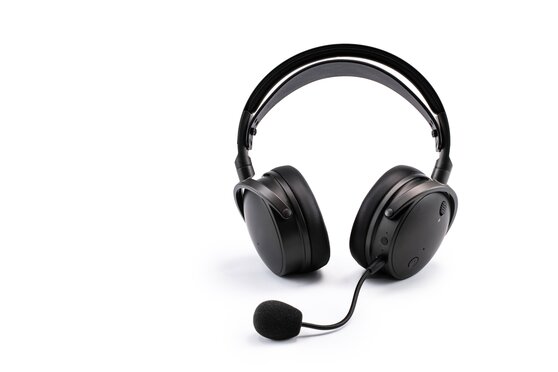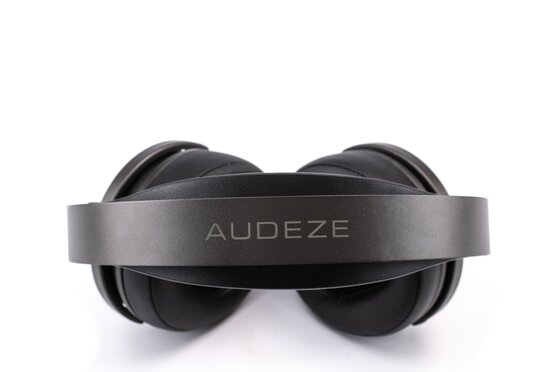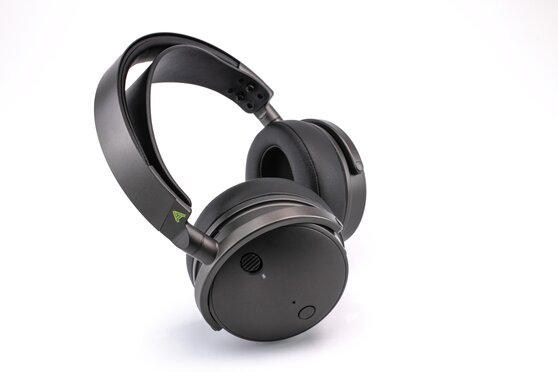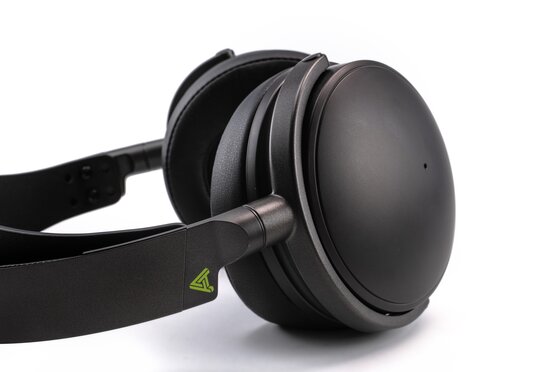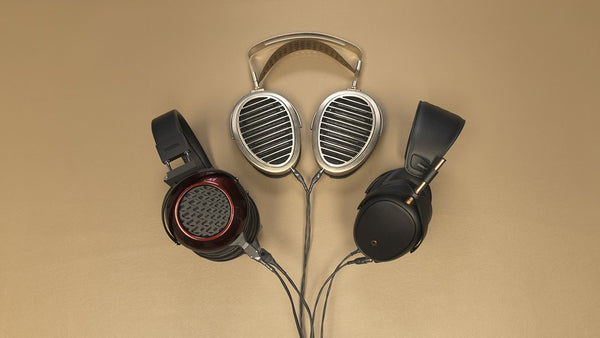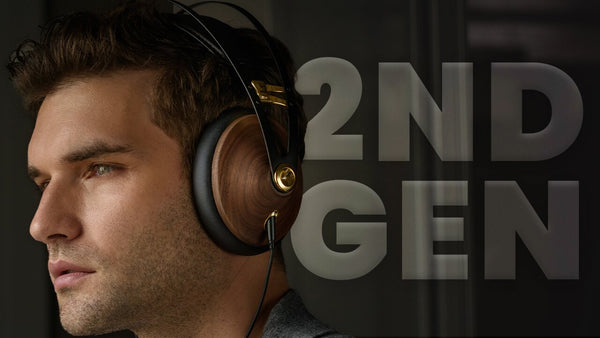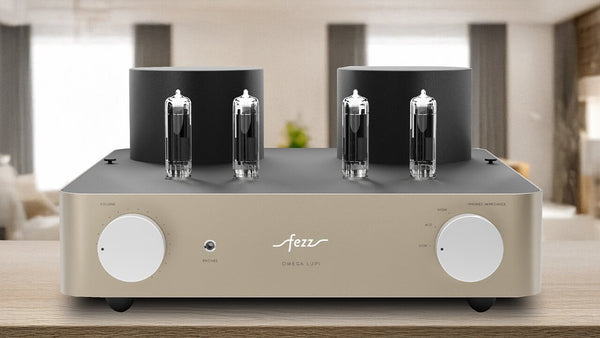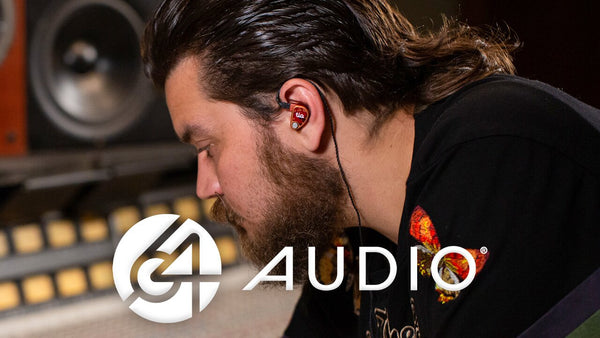Wireless Headphones: How to Choose...

Wired vs. Wireless Headphones: Which is Better for you?
Wireless headphones have saturated the market, making them an easy choice for consumers. People have been cutting the cord on their relationship with wired headphones to make room for a newer, more convenient option: Wireless headphones.
But how do they really stack up against good old wired cans? And how do you know what's right for you?
At first glance the only real difference between wired and wireless headphones seems to be that one has a cable and one doesn't. But there's much more that sets these two headphones apart and makes them similar. In this blog we'll discuss the sound quality, features, battery life, portability and compatibility of each headphone type to give you some ideas as to which route you might want to take in your own headphone journey.
Sound Quality
Both wireless and wired headphones can sound great, but the components, the cables and the overall materials matter and that's what we'd like to decipher for you. We will teach you how to choose what sounds and works best for you when listening to your favorite tunes. Without a cable to transmit audio from the source to the headphone, wireless headphones utilize a connection via Bluetooth or Wi-Fi. Most wireless headphones on the market use Bluetooth technology. Both wireless connection types have their benefits and drawbacks, which we will discuss at length in future videos on our YouTube channel, Moon Audio.
The sound quality in a pair of wireless headphones is determined by the built-in DAC chip and amplifier inside the headphones. Once a wireless audio signal is transmitted, those components control the sound quality. The headphones will receive a compressed version of the audio and can be vulnerable to interference.
Wired headphones generally offer better sound quality than its wireless counterparts. With a pair of wired headphones, the audio cable allows for all data to be transferred without any loss or degradation from the audio source. There's more tonal flexibility and you can often upgrade the cables in a pair of wired headphones to tailor the sound signature to your liking.


If you're looking for a headphone that'll provide the best sound quality, it really comes down to budget and what you're willing to spend. With a wired headphone, the price can range significantly; you can find yourself spending anywhere between $1,000 to $6,000 on a pair of headphones that'll deliver true audiophile-grade sound quality.
Wired headphones generally offer better sound quality than its wireless counterparts. With a pair of wired headphones, the audio cable allows for all data to be transferred without any loss or degradation from the audio source.
Features
Some of the latest wireless headphones are adorned with features like active noise cancellation and detachable boom mics. Additionally, wireless headphones may have voice control assistance, touch controls, ambient noise settings and control buttons for volume and track skipping. They can also be used wired if they have a connection point or a headphone jack.
For example, the Focal Bathys is a premiere wireless headphone with active noise cancellation that delivers audiophile-grade sound quality. You get the benefits of active noise cancellation, ergonomics, portability and more, plus excellent sound quality for that musical experience we're all looking for when we tune in to our favorite song or album. For even greater fidelity, the Bathys can be used in a wired setup.

Most wired headphones have detachable cable options, which allows you to upgrade your headphone cable for an improved listening experience catered to your music genres. And if it's a Hi-Fi wired headset, say for gaming, some even give you the option to disconnect the boom mics and Ta-da — you've also got a great headphone for listening to music. Depending on efficiency, some wired headphones may require DACs and amplifiers to power them.
Audeze's wireless headphone, the Maxwell is made with the gamer in mind. With a detachable boom microphone, the Maxwell is a versatile headphone that delivers audiophile-grade planar magnetic sound, starting at just $299. The Maxwell is Audeze's latest headphone in their line of growing Hi-Fi gaming headsets, offering some of the most features in a wireless headset.
Battery Life
We've all experienced the panic as we rush to find the nearest charger to plug in our wireless technology before it dies. The battery life of a wireless device is important, and when it comes to wireless headphones it can be a sore spot. With a pair of wired headphones, you can simply plug and play. It's a no-frills listening experience without the hassle of charging a pair of headphones.
Meanwhile, wireless headphone manufacturers are battling to create a pair of headphones with a substantial battery life that doesn't cost a fortune or weigh a ton. The need to charge and recharge wireless headphones can be taxing at times. If you forget to charge them you're just kind of out of luck. Some wireless headphones have a quick charge feature so you can get just enough juice to power them for a bit.
The Maxwell boasts a battery life of 80 plus hours, depending on what you're running. A close second is the Sennheiser Momentum 4 wireless headphones that have up to 60 hours of battery life. Just 10 minutes of quick charge gives these headphones six hours of playtime.
Some wireless headphones with headphone jacks will allow you to use them passively without having to turn them on and drain the battery. Simply plug a cable into the headphone and source device and enjoy unrestricted playtime.
The Sennheiser Momentum 4 wireless headphones can be used passively, while the Focal Bathys and HiFiMan ANANDA-BT R2R are two examples that cannot. Certain headphones can be used passively, but they must have the ability to be able to bypass the internals, and the drivers must be efficient enough to be powered by the audio signal coming from the headphone cable. When used passively, the headphones will use the battery life from the source device they're connected to and not their internal battery. It's an important thing to keep in mind if you think battery life is going to be an issue for your usage or ergonomic scenario.
Portability

Wireless headphones and convenience are practically synonymous. They're widely regarded for their portability thanks to freedom from the wire. That's not to say that wired headphones aren't portable, because they are. But, wireless headphones offer a hands-free listening experience. You have the freedom of movement to wash dishes and mow the lawn without worrying about unintentionally tugging the cable.
Bluetooth connection has limited range, typically up to 30 feet, and audio signals can be blocked by physical barriers like walls, furniture, floors and other obstacles. Because of this, the audio quality will deteriorate when transmitting through obstacles, so it's better to be safe and keep that source device nearby for optimal sound quality without interference or dropouts.
Even with the cable, wired headphones are still portable but their range of mobility is ultimately up to the user.
If you're looking for a headphone that's convenient and portable, the Sony WH-1000XM5 wireless headphone will do just that. The WH-1000XM5 comes with a case that can be easily stored away in a suitcase or backpack. The headphone's feature a newly designed driver made with lightweight materials to provide even more comfort for short or long listening sessions. This coupled with the case makes the XM5's a pair of headphones you can use in just about any user or listening scenario.
Compatibility
For years, the 3.5mm connector has been the universal standard for connecting to or plugging into most modern audio equipment. Most wired headphones come with one cable connection type, and it's typically the unbalanced 3.5mm connector. But, there are other common connector types like balanced 4.4mm, balanced 2.5mm, 1/4 inch unbalanced or a balanced XLR connector.
As mentioned earlier, both wired and wireless headphones can have detachable cables. In the case of wired headphones, you can upgrade the cable to enhance the headphone's sound signature. Be sure to check out our Dragon Headphone Cables if you're looking to upgrade your wired headphones. We handcraft them daily in our Cary, North Carolina headquarters to fit your headphones and connection types.
What if you want to upgrade to a cable with a different connector type? No worries, you can alter the connection type as long as the cable's detachable. However, if the cable is hardwired, you will have to re-terminate the headphone or use an adapter.

When it comes to connecting wireless headphones, they are primarily connected via Bluetooth, although Wi-Fi connection is another option that's gaining traction. A Wi-Fi connection will typically provide higher bandwidth compared to Bluetooth. Some wireless headphones that use Wi-Fi connectivity may offer low latency performance, which is important for applications like gaming. The Maxwell has four connectivity options: 2.4GHz wireless connection, Bluetooth 5, wired via USB-C and analog — making it one of the most compatible wireless headphone options that delivers lossless-quality high-resolution audio.
Bluetooth technology is the least expensive to produce and it's fairly easy to connect devices. Some wireless headphones have Bluetooth multipoint where you can connect multiple devices simultaneously.
For instance, the Sony WH-1000XM5 features Bluetooth multipoint and can connect two devices simultaneously. So when a call comes in, your headphones know which device is ringing and connects to the right one automatically. This can be a handy feature for someone who may have two phones — say a work and personal phone — and wants to listen to music on their personal phone while still being able to hear and answer any incoming work calls.

As with all features though, there are drawbacks. Bluetooth's compatibility is dependent on the Bluetooth versions and codecs of the wireless headphones and source device. Bluetooth codecs determine how the audio signal is transmitted from the source device to the audio output. Bluetooth versions define the capabilities of the Bluetooth hardware and firmware.
For instance, Bluetooth version 5 has better range and a more consistent connection than Bluetooth 4. It's worth noting that devices with different Bluetooth versions can still connect with one another. So, if your wireless headphones have Bluetooth 5 but your smartphone has Bluetooth 4, your headphones will still connect but they'll use Bluetooth 4. This can result in your headphone's operating at a lower performance.


Bluetooth codecs also operate with the same stipulation: If your wireless headphone has a Bluetooth codec that supports high-resolution audio, say LDAC or LHDC, but your source device doesn't, then the audio quality will be lowered to what the source device can transmit. Both the source device and wireless headphone must support the same high-resolution audio codec for it to be utilized.
Dragon Cables
Our HiFi Audio Dragon Cables bring out more of what you love in your music and audio gear. If you love your headphones but wish they had a bit more top-end sparkle - a Silver Dragon Headphone Cable would be a great option. If your USB cables keep dying - as many stock cables do - then check out our quality USB Audio Cables. We say time and time again that materials matter, and our audio cables and custom geometries actually help to bring out those desired properties in your gear and music. We make tons of custom options for our customers so that you can get the right HiFi Audio cable for your exact needs. If you have any questions feel free to Contact Us and we'll be more than happy to help.
Which One is Right for You?
So, now that we know the difference between wired and wireless headphones you're probably asking yourself which one is right for me? Well, the decision between the two depends on personal preferences, when and where you'll be using them, and priorities in terms of sound quality, convenience and price.
If you want a pair of headphones that travels well and doesn't always require additional gear, a wireless headphone might be the right fit. And if you don't want to stress over a dwindling battery, maybe opt for a pair of wired headphones.
Here at Moon Audio we carry numerous wired and wireless headphones; one of which may be the right fit for you. We are here to help you figure out which is the best fit for your listening style, ergonomic scenario and ultimately your ears.
Related Videos
Wired vs. Wireless Headphones: How to Choose
Best Wireless Headphones of 2023
The Future of Wireless Headphone Technology


